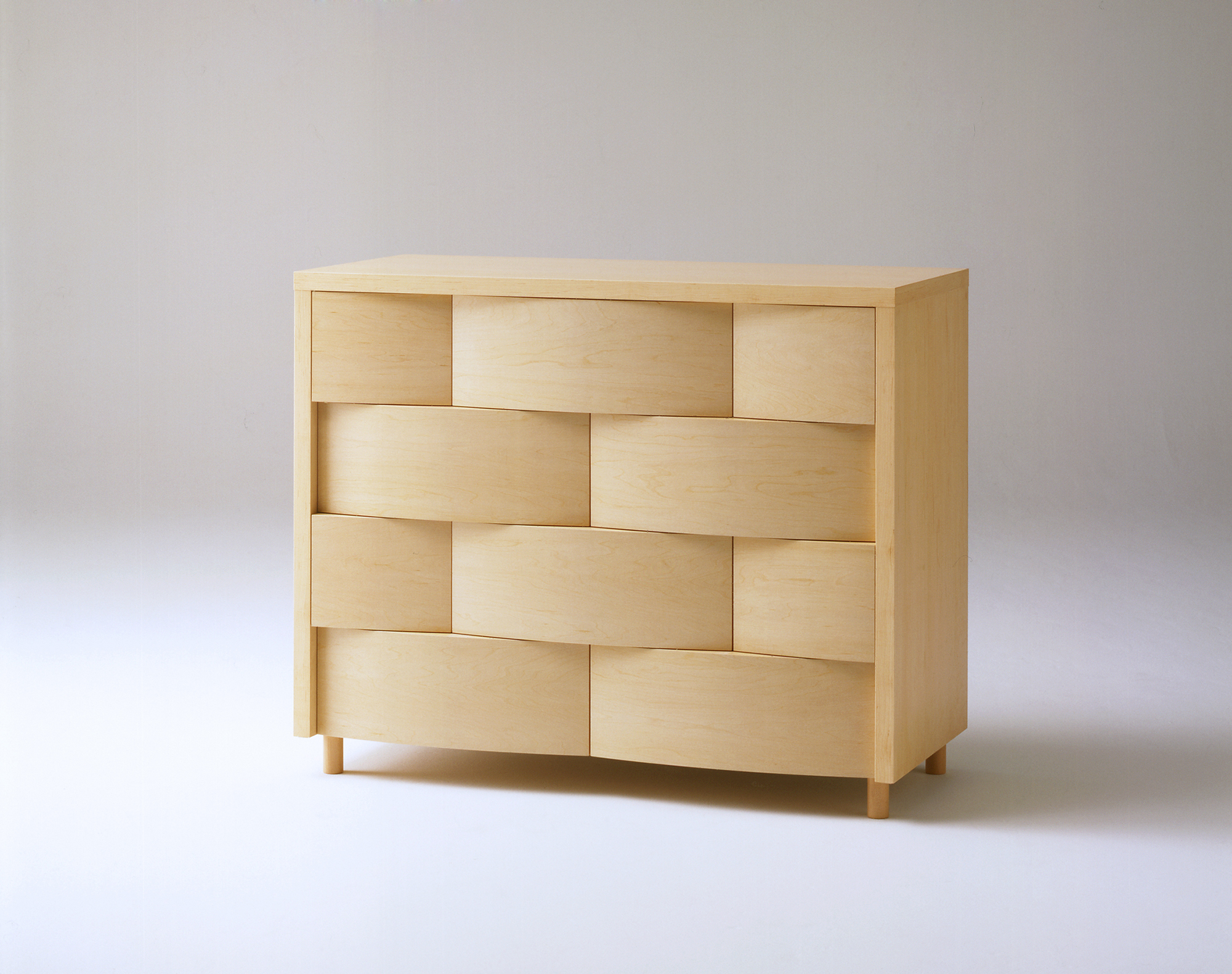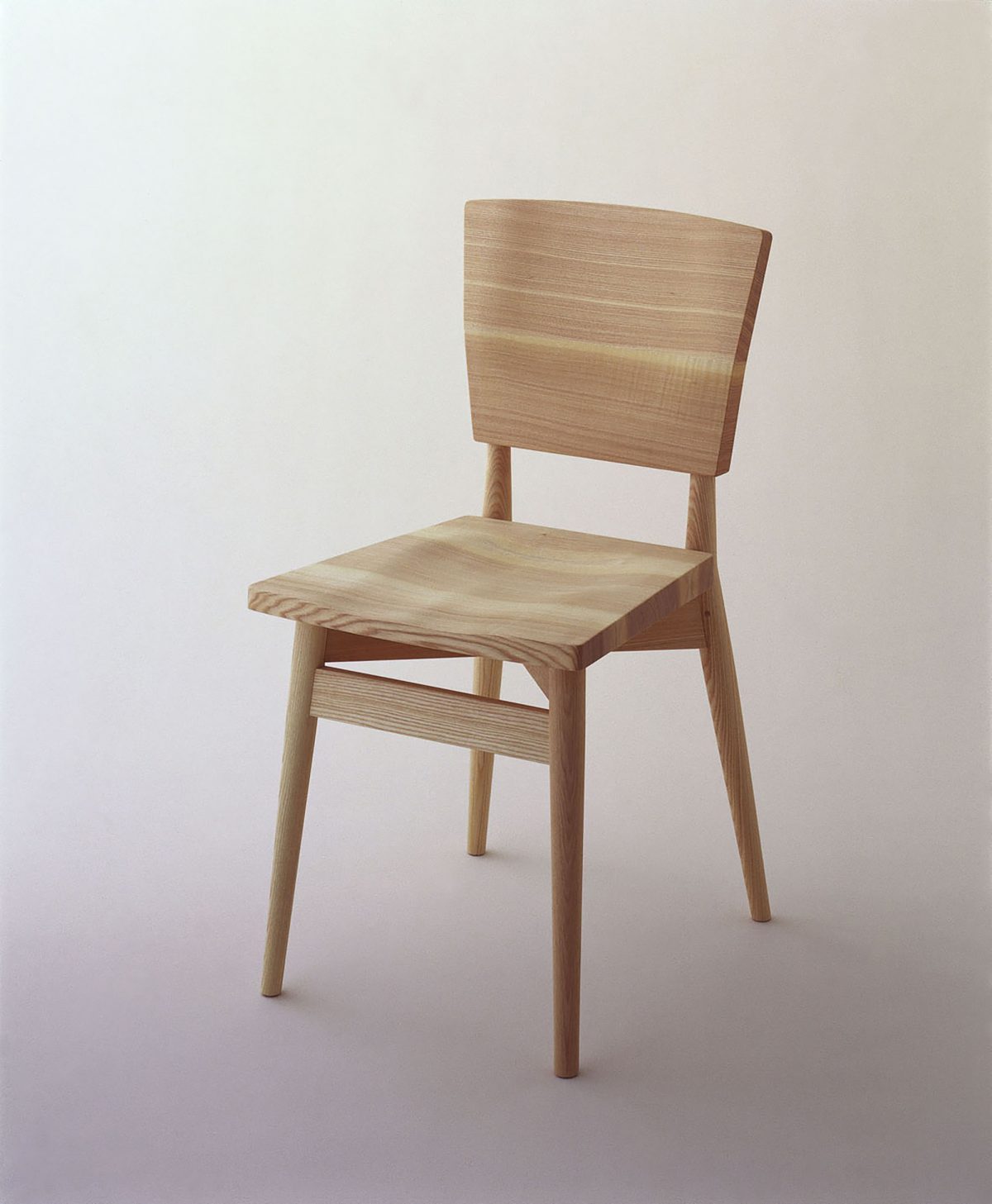The Local Industry × Design (Part 1)

IGARASHI DESIGN STUDIO has been offering potential solutions to the challenges faced by local industries through product design since the 1990s. In this article (1&2), we will present some of the work we have done so far, as well as some of the secret stories behind the development of our products.
Furniture born from challenges
TANGO, with its gently rippling drawers, was developed in cooperation with a Shizuoka furniture manufacturer.
―I read in a document that you first worked on the so-called “local industry,” or local manufacturing, at the 1997 Shizuoka Dynamics Exhibition. It is now quite common to think of design as solving local problems, but you were already involved in this field in the late 1990s, weren’t you?
Igarashi:Actually, the first Dynamics exhibition was the precursor to the Dynamics project, the project to improve the image of the Shizuoka production area in1988, and Mr. Shiro Kuramata of Kuramata Design Office, where I worked for many years, was involved in this project. Mr. Kuramata, George Soden, Shigeru Uchida, and Toshiyuki Kita attended as designers. At first, Mr. Kuramata said, “I want you to work on this project with the intention of continuing it for 10 years. “I was very fortunate to be asked to join as a designer after that.
―So, thinking about the community from the perspective of design has been going on since the 1980s? Did Mr. Kuramata have a vision for the “10 years” he mentioned?
Igarashi:Until then, there had been various projects in which artists and designers were nominated, but many of them ended after just one time. I think he felt that was not enough. Shizuoka’s staff has been working hard to make sure that his advice is taken to heart.
The Shizuoka project was renamed “Tsunagu Design” and continues to this day.
―What kind of region does Shizuoka have?
Igarashi:There were major musical instrument and car manufacturers, as well as many small and medium-sized manufacturing companies, and I had heard that there were many designers in the prefecture. It is also one of the four major furniture producing areas, and is conveniently located halfway between Nagoya and Tokyo, with the Tomei Expressway and Shinkansen bullet trains running through the area. Fuji and a mild climate, the area has a high population of residents. As for furniture, the area is known for its production of Hakomono furniture, a type of three-piece wedding chest set, in which the Kagamidai (mirror stand) is a specialized piece of furniture.
―What kind of works did you exhibit at the 10th Dynamics exhibition?
Igarashi:The number of items was numerous. We proposed nearly 30 different designs, including dining table sets, wagons, cabinets, chests, shelves, mirrors, and dressers. At that time, our particular focus was to consider how wooden furniture should look against a white wall. We proposed a moderately distinctive way of showing storage furniture with a comparatively large area, such as chests and shelves, while smaller items with mirrors and glass were designed to be distinctive and accentuated.
-1200x946.jpg)
―I assume that local industries have their own specialties, but what do you keep in mind when you make a design proposal?
Igarashi:The first thing we would do is to do a complete research on the current situation. Even if we are good at what we do, there may be differences in the way we do it, and we would also like to see what is going on in the surrounding area. We will then consider how to take advantage of the unique characteristics of the area.
In Shizuoka, there is a great deal of skill in making furniture using veneer plywood and box furniture. Tango, designed for Shizuoka Dynamics, uses solid wood for the face material and veneer, but the surface is gently curved, so it requires a high level of skill to apply the veneer. That one company tried various methods of treating the curved surface and completed the project.
―Rather than design primacy, it would be more like deciphering the characteristics and potential of the region and asking the manufacturer to jump just a little bit.
Igarashi:I’m thinking a “can do, but a little harder” suggestion would be nice.
Deciphering Local Characteristics
―The theme of the “baguette” furniture series developed with Hida Sangyo, based in Takayama City, Gifu Prefecture, is to create a series of furniture designs that suit urban living spaces by utilizing solid wood processing techniques such as bending and carving, so what are the characteristics of Hida compared to Shizuoka?

Igarashi:Hida is a place deep in the mountains and has limited transportation infrastructure compared to Shizuoka, where the Tokaido Highway runs through. However, since the region has long been known for its woodworking techniques for handling solid wood, it is able to handle both hardwoods and softwoods, and has gained trust for its high level of technical skills, gaining fans along with the Takayama region.
―What is your primary motivation for accepting a job in a local industry, and why do you want to support such an area?
Igarashi:Well, I also think that the Japanese are a people who like and are good at making things. When I ask, “Can you do this? they will try to get close to it even if they cannot do it. Many people are very active in local manufacturing. I believe that new discoveries and opportunities to learn about them that I did not know before will deepen my connection with that region and my support for it, of course. Now is the time when we need to pause, organize, and think.